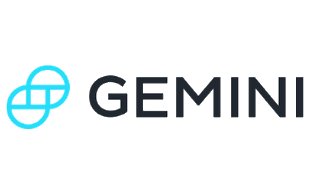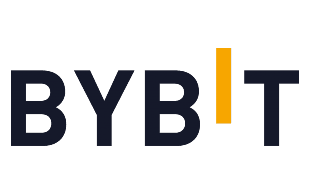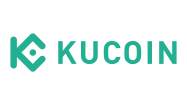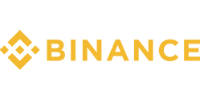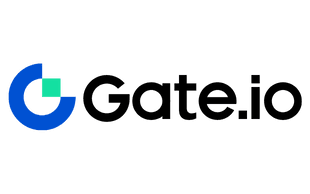Disclaimer: This page is not financial advice or an endorsement of digital assets, providers or services. Digital assets are volatile and risky, and past performance is no guarantee of future results. Potential regulations or policies can affect their availability and services provided. Talk with a financial professional before making a decision. Finder or the author may own cryptocurrency discussed on this page.
The term metaverse is mainly used to refer to a player-owned world built on blockchain technology that utilizes cryptocurrency, and may have virtual reality (VR) or augmented reality (AR) features. Most metaverses require users to purchase in-game items and parcels with cryptocurrency, and these items are almost always nonfungible tokens (NFTs).
Overall, the main goal with a metaverse is to explore, chat, game and build the world with other players — and it’s meant to (eventually) function as an extension of our current reality.
Both Cryptovoxels and Decentraland are considered metaverses, use the Ethereum blockchain and have similar play-to-earn methods; but that’s where their similarities end. They differ in VR gear capabilities, style, in-game currency and virtual real estate availability.
Cryptovoxels vs. Decentraland: Snapshot comparison
Quickly compare compatible crypto wallets, parcel availability, marketplace fees and more.
| Cryptovoxels | Decentraland | |
|---|---|---|
Launch year | 2018 | 2017 |
Plots of land | 5,919 parcels | 90,000 parcels |
VR capabilities | Yes | No |
Tokens in circulation | ETH: over 119 million | MANA: over 1.8 billion |
Crypto wallet required | No, but required to create an account and store digital assets. | No, but a software wallet required to store digital assets. |
Wallets supported | MetaMask, WalletConnect, Coinbase or Facebook (via Torus). | Software wallets that can be integrated with browsers. Recommends MetaMask. |
Marketplace fees | 2.5% on all transactions | 2.5% MANA cost in all transactions |
Cryptovoxels breakdown
Cryptovoxels is a bit of an underdog in this metaverse matc up, but it has notable advantages over Decentraland.
As of 2021, it had less than 9,000 registered users, as reported by Global Digital Assets. Decentraland has roughly 800,000 users, reported by The Generalist, and an estimated 600M active monthly users. However, players don’t need to register as a user to enter Cryptovoxels or Decentraland, and guest accounts aren’t recorded, so actual player count is hard to nail down.
Cryptovoxels became open to the public in 2018, and originally used the in-game currency COLR. It’s now a dead token, and Cryptovoxels switched to using ether (ETH), Ethereum’s native asset. We see this as an advantage over Decentraland, since players don’t need to swap tokens around to get a unique in-game currency.
This metaverse requires player interaction. Users can create and sell their own, unique Cryptovoxel assets that can be built using the Cryptovoxels building tool.
Editing tools, player chat and the avatar creation are built into the game. Players can buy a virtual parcel and host events for other players to attend, like dance parties, art shows, mazes or just a hang-out sesh.
The Cryptovoxels’ marketplace and in-game storefronts are run by OpenSea, one of the largest NFT marketplaces, which is also built on Ethereum. Users that create NFTs using Cryptovoxels’ building software and mint on the platform can earn up to 10% royalties from secondary sales — Decentraland doesn’t offer royalties on NFTs minted on the platform (yet).
And if you’re looking for a more immersive experience, Cryptovoxels supports the most popular VR headsets including Oculus Quest, Oculus Rift and HTC Vive. To date, Decentraland has no VR support.
Like other metaverse games, there are ways to earn income while playing. Earning methods in Cryptovoxels include:
- Rent, buy and sell virtual parcels, Cryptovoxels Parcel (CVPA)
- Sell usernames and unique Cryptovoxels assets
- Earning royalties from secondary sales of NFTs (up to 10%)
- Create NFT storefronts, art galleries, mazes and more
Decentraland breakdown
It’s nearly impossible to talk about crypto metaverses without mentioning Decentraland, seeing as it’s considered the first in existence. Development for the project began in 2015, became a fully-realized metaverse in 2017, and opened to the public in 2020.
Decentraland remains one of the most talked-about metaverses. It’s expansive, creative and offers players the opportunity to earn income. It uses its own currency, an Etheruem token called MANA.
MANA is used to purchase in-game assets such as parcels (LAND), avatar wearables and can even be used to get a mortgage. At the time of writing, MANA is valued at $2.40 according to CoinMarketCap.
Decentraland lets creators build their own play-to-earn games on their owned LAND. Among the most popular genres are casinos featuring games like blackjack, roulette and slot machines. Players can also participate in these custom play-to-earn games as an employee and get paid by the game owner.
The possibilities are nearly endless when it comes to customizing what you do within the game — provided you’re willing to invest time, crypto and energy.
Style-wise, the game is more realistic-looking than Cryptovoxels. Cryptovoxels is more Minecraft-inspired, featuring blocky avatars and features, whereas Decentraland’s avatars and world are rounded and cartoonish rather than pixelated.
Some play-to-earn strategies in Decentraland include:
- Buy and sell LAND, Decentraland’s parcels
- Host events on your LAND
- Mint NFT wearables to sell at the marketplace
- Use the tool builder to create play-to-earn games on your LAND
- Stake MANA with third-party providers
Cryptovoxels vs Decentraland: Real estate
Both metaverses allow users to buy virtual parcels. In Decentraland it’s ERC-721 tokens LAND, and in Cryptovoxels it’s called Cryptovoxels Parcel (CVPA), also a ERC-721 token.
Cryptovoxels has significantly less available real estate, and Decentraland offers players mortgages to get pricey parcels.
Cryptovoxels
With a maximum supply of 5,919 parcels, real estate is limited compared to Decentraland’s 90,000 parcels.
Land in Cryptovoxels can be purchased either in weekly primary land sales, or on the secondary market with OpenSea. To become a landowner, you need a digital wallet, either MetaMask, WalletConnect, Coinbase or Facebook via Torus.
Select Buy Parcels on the main navigation bar to look at land for sale. Prices for CVPA float around 1 to 7 ETH, on average, at the time of writing.
Decentraland
While Decentraland has a maximum of 90,000 parcels, not all of those parcels are up for grabs. Aside from the ones that are off the market, some parcels will never be for sale, as they’re reserved for special in-game events.
To buy LAND in the game, select Marketplace on the main navigation bar at Decentraland.org. Then filter by asset: Land, Collectibles or My Store. You need a MANA and a digital wallet to purchase LAND.
Buying LAND in Decentraland can be costly, typically ranging from 30,000 MANA ($69,600) to over one million MANA ($2,320,000) — or more.
However, Decentraland offers players the opportunity to take on a mortgage to buy LAND, thanks to a partnership with Ripio Credit Network (RCN). These mortgages are set up similarly to real-world mortgages — there’s an application process, a required 10% down payment (in MANA), interest rates and the like. Players make scheduled payments and once the balance is paid, they can officially claim the property.
Cryptovoxels vs. Decentraland on NFTs
In-game assets in metaverses are almost always NFTs, and Cryptovoxels and Decentraland are no exception. Both use ERC tokens.
Cryptovoxels
To be frank, the Cryptovoxels’ NFT market isn’t very pretty to look at. It’s clunky, and looks like it was designed in the 90s. However, you don’t have to use the Cryptovoxels’ market, since you can just head to OpenSea — which has a more user-friendly interface and design.
Users create their own Cryptovoxels assets to be sold on the market, at OpenSea or in the metaverse itself. If you set up a storefront in the game, users view your items for sale, make their selections and are directed to the OpenSea marketplace for purchase.
If you create your own assets using Cryptovoxels’ design tools, you can earn royalties from secondary sales, up to 10%. But remember that the market takes 2.5% of all transactions.
Decentraland
Compared to Cryptovoxels, Decentraland’s marketplace is wonderfully designed. It’s clean, easy to use and looks modern. However, you can only earn from primary sales — no royalties.
However, in January 2022, Decentraland announced that royalties will be implemented, but assets created before this implementation will not be grandfathered in. Decentraland also takes 2.5% from all transactions made on its marketplace.
Compatible exchange: Gemini Cryptocurrency Exchange
Minimum Deposit
Cryptocurrencies
Fiat Currencies
- Wide range of exchangeable currencies
- User friendly
- Newcomer incentives
- Insurance on currency balances up to $250k
- Balances can earn interest
- High fees on mobile app
- Missing some notable top 20 currencies
- No linked debit cards available
Gemini's strongest point is its Gemini Earn program, which allows users to earn up to 7.4% interest on specified cryptocurrency balances.
Gemini has a wide selection of cryptos available for exchange on the platform. However, some notable entries from the top 20 by market cap are missing, such as Cardano and Solana.
| Deposit Methods | Bank transfer (ACH) PayPal Wire transfer (USD) Bank transfer (EUR and GBP) FAST transfer (SGD) Cubix Plaid Direct Payments (UK) |
|---|---|
| Deposit Fees | ACH transfer: none Wire transfer (USD): determined by your bank +$25 PayPal: 2.50% Cubix: none |
| Withdrawal Fees | ACH transfer: none USD wire transfer: $25 |
| Trading Fees | Trading: Dependant on transaction size: $10 or less: $0.99 $10–$25: $1.49 $25–$50: $1.99 $50–$200: $2.99 More than $200: 1.49% of order value Spread: 0.5% convenience fee on all transactions |
Compare marketplaces to buy metaverse NFTs
Are you visiting from outside the US?
Cryptovoxels vs. Decentraland: Who backs them?
Cryptovoxels was developed by Nolan Consulting — namesake Ben Nolan — an independent game developer based in New Zealand. Decentraland is overseen by the nonprofit Decentraland Foundation, developed by Esteban Ordano and Ari Meilich.
Both metaverses earn from marketplace transactions and from selling their respective native currencies at launch.
Bottom line
For many, the obvious choice in metaverse experiences is Decentraland. It’s credited as the first player-owned metaverse, has major in-game earning potential and gives users freedom to customize their experience. And if you want a choice parcel, you have the option to take on a mortgage.
However, Cryptovoxels have solid advantages. For starters, Cryptovoxels supports VR gear to create a more immersive experience. Additionally, creators can earn up to 10% royalties from their unique Crytovoxels assets and sell them on their own land. Decentraland is implementing royalties, but assets that are or were created before this update are out of luck.
Decentraland has more users than Cryptovoxels — at least on paper — but it’s losing some interest in recent months. According to data from the last 30 days, Decentraland is losing around 15% of its users per day on average, as pointed out by CoinDesk in April 2022.
Luckily, in both metaverses, there’s no investment required to test them out. You can enter either game as a guest without creating an account or buying anything, so it wouldn’t hurt to give both a test run before investing your hard-earned crypto.
Whether products shown are available to you is subject to individual provider sole approval and discretion in accordance with the eligibility criteria and T&Cs on the provider website.
Ask a question
More guides on Finder
-
Top 29 NFT and cryptocurrency influencers in 2022
Check out the top tastemakers for crypto, NFTs, DeFi, Bitcoin and blockchain technology, from NYT experts to published authors and YouTubers.
-
Finder Awards 2022: NFT marketplaces
We compared over 30 NFT marketplaces to award the top platforms of 2022.
-
NFT vs. Crypto
Crypto and NFTs are far from the same thing – learn the differences.
-
Town Star review: An addictive P2E NFT farming simulation
In this Town Star guide you’ll learn how Gala Games’ free-to-play NFT farming simulator with P2E potential puts fun first.
-
NFT trading cards: What they are and how they work
Explore the world of NFT trading cards
-
My DeFi Pet game guide
My DeFi Pet is a blockchain game with many ways to interact with your NFT pets.
-
NFT statistics
The definitive ranking of the NFT adoption across 26 countries.
-
Crypto.com NFT marketplace review
Trade, mint and collect with Crypto.com’s NFT marketplace.
-
eBay NFTs review and guide
A deep dive into eBay’s foray into the NFT ecosystem, looking at everything from available categories to potential drawbacks.

